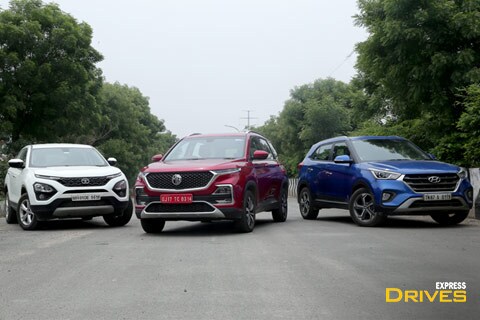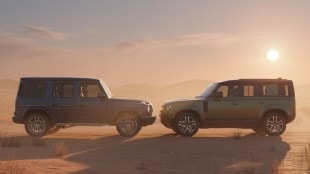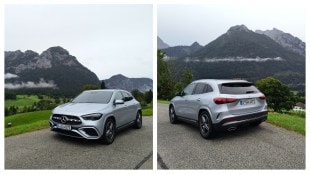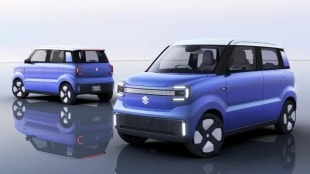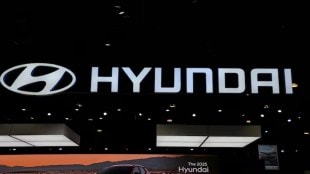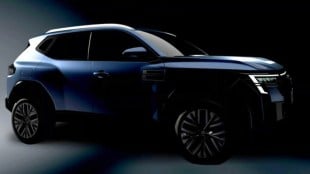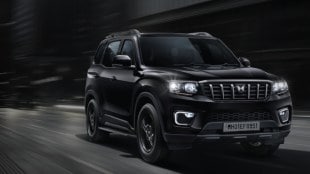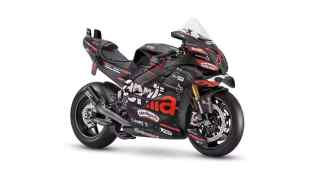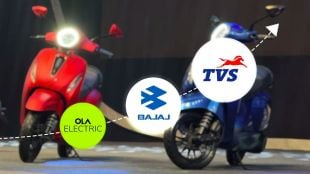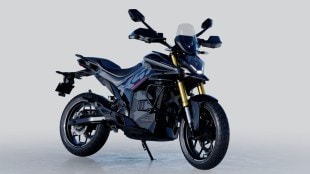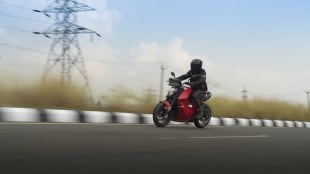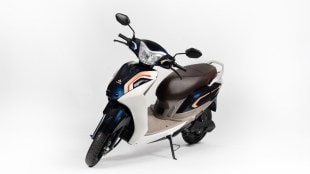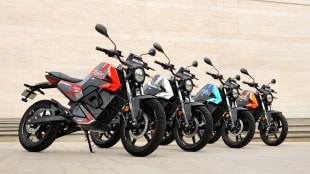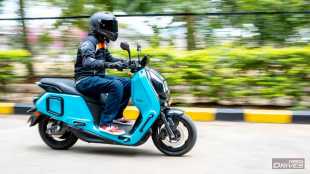
If you’ve ever seen wildlife documentaries, you would have noticed that a lion has to work hard to fend off competition for exclusive rights on his pride. More often than not a young pack of lions have their eyes on this particular king and they wait for an opportunity to dethrone him. Something similar is happening in the C-segment SUV sector in India. Most of the new automakers in the market have a C-segment SUV on offer. These SUVs are slightly bigger than your sub-4m vehicles, offer a bit more of space but a whole lot of new features. The Creta (our dominant lion in this story) enjoyed a monopoly for a long time, fending off fresh competition quite easily. The vehicle has reached its prime now though. With the entry of the Harrier as well as the Hector, things seem to have shaken a bit for the Hyundai. We took all three to find out if these new lions on the block tick off the old-timer or does the Hyundai manage to retain its pride?
Looks and interior
Hyundai

The Creta got a facelift last year. This botox injection worked well and has helped sustain interest in this SUV quite a bit. In fact, Hyundai manages to move more than 10,000 units of the Creta every month. The reworked grille, brighter DRLs circling the fog lamps, fresh alloys and new features have helped the Creta get a firm hold on the segment. In terms of features, you get an electric-powered driver’s seat, a sunroof, wireless charging pad, 7-0 inch touchscreen infotainment system with Android Auto and Apple CarPlay as well as an Arkamys sound mood system. The interior overall is functional but is now dated amidst this trio.

The Creta’s wheelbase of 2,590mm helps it accommodate two passengers at the rear with reasonable ease while the third passenger may end up jostling for shoulder space with the others. The boot space of 400 litres too is a shade down on the others here. What is commendable though is the build quality of the car. I have driven one for more than a year and on varied terrain. Nothing broke loose or fell off.
On the features front, the Creta seems to have everything covered but Hyundai seems to have forgotten the auto headlights and wipers.
Harrier

To me, the Harrier has seemed closer to the F-Pace than what its Land Rover-derived architecture suggests. It is more like an affordable version of the Jag SUV. The general silhouette, the unconventional yet attractive positioning of the headlights, the slightly coupe-ish form as well as the connected tail section warrant attention. The cabin too isn’t far off and is one of the best I’ve experienced on a Tata car. One gets an 8.8-inch touchscreen infotainment complete with Android Auto and Apple CarPlay. The Harrier’s infotainment system has a provision to score you based on your driving finesse and coerces one to drive carefully. Tata’s use of a part-digital instrument cluster is also appealing as well as easy on the eyes. It also has media, navigation as well as phone mirroring capabilities.

With a wheelbase of 2,741mm, the Harrier is just shy of the segment leader, Hector. The Harrier can seat three easily at the rear and have enough legroom for them as well. But then, the sloping roof might not suit the taller ones. Moreover, the Harrier’s rising window line may not be a claustrophobic’s dream. Boot space of the Harrier at 425 litres is slightly better than the Creta’s. While it is too early to talk about the longevity of the car, we’ve heard of a refreshed version which has been modelled on customer feedback and should be out soon. This one is claimed to have ironed out the niggles of the current SUV.

Tata, however, hasn’t taken learnings from the Nexon. The Harrier’s USB port is placed in such an awkward fashion that it is like finding a needle in a haystack. Ditto for the rear unit. Speaking of which, the initial impression is that there are no rear ac vents but look at the B-pillar and you will find them.
Hector

This one has lots of chrome as well as a newness to it. It also follows the design language of the Harrier with a different positioning for the headlights and turn indicators. We like the stance of the vehicle too. After all, it is the longest in its class. The interior too is a refreshing change from what we have seen so far here. There is a bit of chrome in the cabin while the centrepiece is the 10.4-inch touchscreen unit. It is not only vivid but hosts a lot of information. One can even remote start their vehicle, ask the MG on-board assistant to do a variety of chores like opening the sunroof, opening the boot, lowering the volume, inbuilt navigation with realtime updates and so on. The system itself is intuitive but then it picks up random words in a conversation and executes them too. In the short while we had the car with us, I got used to just blurting out commands instead of using haptic feedback from the screen. A very thoughtful touch is a USB port right behind the IRVM for charging your GoPro or even the dashcam.

 The Hector has got front powered seats, a panoramic sunroof, twin USB ports at the front and back as well as rear AC vents. MG has given the Hector, the longest wheelbase in its class – 2,750mm. This allows three people to be seated comfortably at the rear. What’s more, even the rear seats also recline to aid comfort. MG has also given the Hector a 587-litre boot. It is largely usable but there are wheel well intrusions too.
The Hector has got front powered seats, a panoramic sunroof, twin USB ports at the front and back as well as rear AC vents. MG has given the Hector, the longest wheelbase in its class – 2,750mm. This allows three people to be seated comfortably at the rear. What’s more, even the rear seats also recline to aid comfort. MG has also given the Hector a 587-litre boot. It is largely usable but there are wheel well intrusions too.
Engine
Creta
This top-spec Creta that we have here runs a 128PS/260Nm, 1.6-litre diesel engine. We have the 6-speed manual transmission here for the sake of comparison while you can also ask for a 6-speed automatic. The engine is one refined unit and can even rival a petrol engine for refinement. We, of course, have experienced the petrol Creta earlier. The diesel engine has good bottom and mid-range. The turbo spools up just below the 2,000rpm mark and you feel the vehicle moving along with a newfound enthusiasm. The gear shifts are smooth while the clutch too is light. Efficiency wise, the Creta returned 14.4kmpl in the city and 22.7kmpl on the highway.
Harrier
The Tata Harrier has an FCA-sourced 2.0-litre 140PS/350Nm diesel engine. At the onset, you notice that engine refinement could be a bit better. However, moving on, you notice that the clutch action is light while the gearshifts too have positive throws. You can also play around with the City, Eco and Sport modes. These will help alter the engine characteristics based on the selection. You do notice that the Harrier isn’t as stress-free to drive as the Creta owing to the bigger size. There is also limited visibility from the rearview mirror and I hope Tata does give a higher resolution rear-view camera. The Harrier is thirsty too given that it returns 11.3kmpl in the city and 14.8kmpl on the highway.
Hector
Well, if you are still wondering when did the Hector diesel come with an automatic transmission, you wouldn’t be off. At the time of this shoot, MG didn’t have a diesel car available for us. So, here I am driving the Hector petrol automatic just for reference. I drove the diesel a few days before this comparison. The engine is a tad more refined than the Harrier but still falls behind the Hyundai. It is in fact the same unit in the Harrier but with uprated power number of 170PS while the torque stays the same at 350Nm. The Hector too has a light clutch but again in this comparison. The gearshifts are smooth, just like the others. You can feel the added pep over the Harrier’s motor while the engine feels free-revving too. You can potter around in town in third gear and a downshift won’t be required. Similarly, high-speed cruising is easiest with the Hector here, given the added power on offer. Unfortunately, we have no efficiency numbers but MG claims more than 17kmpl, so an overall figure of 14kmpl will not be far off the mark.
Ride and handling
All three ride as well as drive differently here. The Creta stays pliant at all speeds. The handling with the light steering feels easygoing in the city however if you are an enthusiast, you will want a bit more feedback and less body roll at higher speeds. I also wish the SUV got rear disc brakes. The current ones, especially on an automatic set up feel a bit lacking. This is more in the case if you’re in the mood for belting the car.

The Harrier feels quite at home taking fast turns and all. The steering wheel though is unnecessarily heavy at city speeds while the becoming a fair bit lighter at higher speeds. This being said, you will enjoy pushing the Harrier around bends. Overcook things and you realise that there is a bit of body roll. The Harrier’s ride quality though could be better at low speeds. You feel a bit of vertical movement at 20kmph over potholes while high speeds encounters don’t disturb the car’s demeanour. There are three different modes governed by ESP – Normal, Rough Road and Wet. I find this gimmicky and more of a show than real application. The brakes are powerful, however, rear discs will have added to the stopping power.

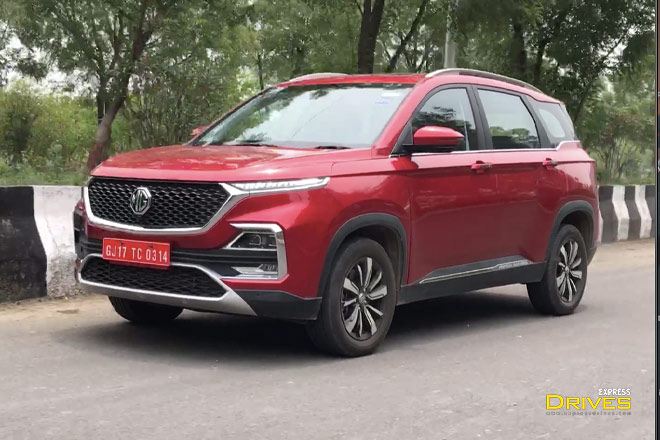
As far as the Hector is concerned, it has got rear disc brakes and the stopping power feels adequate with great feedback. MG has given a feather-light steering wheel which makes manoeuvring this SUV a child’s play. You can see each and every corner clearly, helping you place the SUV where you want it to be. The handling isn’t enthusiastic because of the body roll but the Hector is quick to change directions and generally feels nice to drive.
Safety and warranty
Safety in all three SUVs used for the test is governed by six airbags, ABS with EBD, ESP, ISOFIX child seat tethers, reverse sensors and a rear parking camera. In addition to this, the Hector brings in front parking sensors, 360-degree camera, emergency assistance, auto headlights and rain-sensing wipers. The Creta comes with an Auto Link app that will inform the relevant authorities should there be an unfortunate event of a crash, something that the Harrier doesn’t have. In the Harrier, you do get auto headlights and wipers.
Hyundai backs the Creta with a three year/unlimited kilometres warranty, the Harrier has two years/1 lakh km warranty coverage while the Hector clearly towers above the competition. It brings in a five year/unlimited km warranty as well as service packages that ensure that the customer doesn’t pay anything even for consumables.
Verdict

Let’s see the on-road Delhi prices of all these vehicles. The Harrier XZ is priced at Rs 20.09 lakh, the Creta SX (O) at Rs 18.30 lakh and the Hector is at Rs 20.13 lakh. Given the pros and cons, the Hector wins this comparison test and stands leagues ahead of the Creta as well as the Harrier. It has got style, the best of features as well as is a value for money offering. However, the long term reliability is still a question while the service aspect which looks good on paper is yet to be proven. That the Hector is sold out for this year proves the faith people have shown in the product. The Harrier in the meanwhile loses out on features front and has an engine that seems less at peace than the others here. Overall, if a hassle-free experience without any compromise is your prerogative then the Hyundai Creta offers the best balance between all areas. However, if you are open to experimenting then the MG Hector offers a package that in initial impressions seems pretty much unbeatable.
To sum it up, the old lion (Hyundai Creta) is what we will place our bet on for now.
Images by Rahul Kapoor, Ayush Arya and Anuj Goswami
